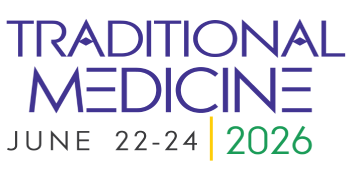Title : Cellulose/organoclay based nanocomposite enhanced by silver colloidal and natural fruit acid extract shows high antitumor efficiency against breast cancer
Abstract:
The current study is aimed at preparing a smart functionalized hydrofoil carboxymethyl cellulose (CMC) sodium salt-based nanocomposite using biomimetic synthesis pathway and evaluation its antitumor efficiency on 4T1 mouse mammary carcinoma cells line in vitro. Cancer is one of the most challenging illnesses, designated by the expansion of mutated cells that proliferate and spread to different organs uncontrollably. The traditional therapeutic strategies used in the treatment of cancer are surgery, chemotherapy, radiation, and targeted therapy. Breast cancer is the most common malignant tumor in women worldwide and is the primary cause of cancer-related death in women. Alternative treatment strategies are needed because the drugs used in cancer treatment cause side effects, low quality of life and high cost. Moreover, drugs used in generally often have poor water solubility. Hydrophobic agent decreased the biocompatibility and this needs to be handled in higher dosages to reach therapeutic efficiency. The studies on more biocompatible and cost-effective cancer treatments have speeded up research on the effects of nanoparticles on cancer. Biocompatible hydrogels with active nanoparticles have been a promising method in cancer treatment for the last decades. Presented in this study biocompatible hydrophilic polysaccharide-based nanocomposite offers opportunity to overcome some limitations of conventional anticancer drugs and chemotherapy. In this study the anti-carcinogenic and anti-metastatic effects carboxymethyl cellulose (CMC) sodium salt-based nanocomposite coated silver nanoparticles C@AgNPs is investigated. C@AgNPs nanocomposite have been syntheses using a new nonradiative light exposed method. This method allows AgNPs to be effective anti-cancer agents at lower doses without disrupting their biocompatibility and without causing free radical formation. Then C@AgNPs have been evaluated using an MTT-based cell viability assay on a triple-negative breast cancer cell line. The toxicity of AgNPs towards 4T1 cancer cells was confirmed by the MTT test and the cell viability assay showed an IC50 value of 8.2 µg/mL (0.0082 mg/mL).
Audience Take Away Notes:
- Cellulose derivatives are employed as excipients in pharmaceutical industrial products for oral, topical or parenteral administration. Their most relevant application, as observed in pharmaceutical industrial products, is to create matrix systems for solid oral dosage forms. Due to their aqueous swelling, the drug release is controlled by its diffusion through the hydrogel layers that they are formed.
- This study shows a practical wLED based eco- friendly approach as a solution for drug syntheses : This method allows AgNPs to be effective anti-cancer agents at lower doses without disrupting their biocompatibility and without causing free radical formation.




